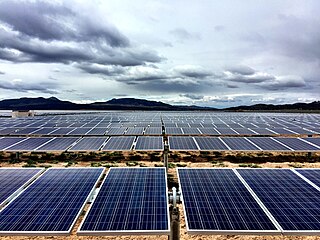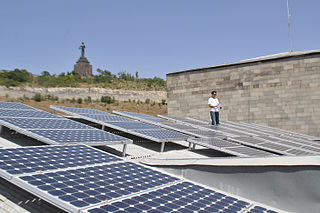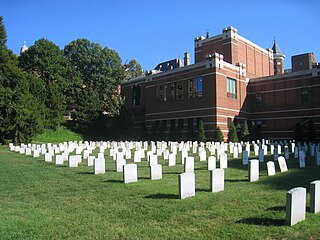In the 19th century, it was observed that the sunlight striking certain materials generates detectable electric current – the photoelectric effect. This discovery laid the foundation for solar cells. Solar cells have gone on to be used in many applications. They have historically been used in situations where electrical power from the grid was unavailable.

Solar power is a fast-growing industry in Australia. As of September 2023, Australia's over 3.60 million solar PV installations had a combined capacity of 32.9 GW photovoltaic (PV) solar power, of which at least 3,823 MW were installed in the preceding 12 months. In 2019, 59 solar PV projects with a combined capacity of 2,881 MW were either under construction, constructed or due to start construction having reached financial closure. Solar accounted for 12.4% of Australia's total electrical energy production in 2021.

Spain is one of the first countries to deploy large-scale solar photovoltaics, and is the world leader in concentrated solar power (CSP) production.
A photovoltaic system, also called a PV system or solar power system, is an electric power system designed to supply usable solar power by means of photovoltaics. It consists of an arrangement of several components, including solar panels to absorb and convert sunlight into electricity, a solar inverter to convert the output from direct to alternating current, as well as mounting, cabling, and other electrical accessories to set up a working system. It may also use a solar tracking system to improve the system's overall performance and include an integrated battery.

The use of solar energy began in Israel in the 1950s with the development by Levi Yissar of a solar water heater to address the energy shortages that plagued the new country. By 1967 around 5% of water of households were solar heated and 50,000 solar heaters had been sold. With the 1970s oil crisis, Harry Zvi Tabor developed the prototype of the solar water heater now used in over 90% of Israeli homes. There are over 1.3 million solar water heaters installed as a result of mandatory solar water heating regulations.

Solar power has been growing rapidly in the U.S. state of California because of high insolation, community support, declining solar costs, and a renewable portfolio standard which requires that 60% of California's electricity come from renewable resources by 2030, with 100% by 2045. Much of this is expected to come from solar power via photovoltaic facilities or concentrated solar power facilities.

Housing at Georgetown University consists of 13 residence halls at the main campus and a law center campus. Housing on Georgetown's main campus is divided between "halls," usually more traditional dormitories, and "villages", usually less traditional apartment complexes. In addition, Georgetown operates many townhouses in the Georgetown neighborhood, usually for second, third, and fourth-year students.
The Hoya de Los Vicentes Solar Plant is a photovoltaic power station in Jumilla, Murcia in Spain. The solar park covers area of some 100 hectares and comprises a group of 200 photovoltaic arrays with a total capacity of 23 MW. A total of 120,000 solar panels have been installed in the facility. The project generates energy equivalent to the annual consumption of 20,000 households.
Bombard Renewable Energy is an American provider of renewable energy services located in Nevada at Las Vegas. Bombard's primary services include the design, financing, construction, installation, operations, and maintenance of solar photovoltaic ("PV") energy systems. Additionally, Bombard performs energy efficiency audits, designs, and constructs mobile solar PV charging stations. Bombard specializes in building solar power systems that use solar photovoltaic (PV), wind energy and concentrated PV, also known as CSPV.
The Blue Wing Solar Project is a 16.6 MWp (14.4 MWAC) solar photovoltaic (PV) power plant in San Antonio, Texas. It was one of the largest PV facilities in Texas when it came online in late 2010 and is owned by a Duke Energy Subsidiary.

Natural Bridges National Monument Solar Power System is an experimental electrical power plant at the Natural Bridges National Monument in the southeastern portion of the U.S. state of Utah. It consists of 256,812 solar cells arranged in 12 rows, each measuring 200 feet (61 m) long. Direct current energy from the array is converted to alternating current at an equipment building, then supplied to the park's staff buildings and visitor center. Excess energy is stored in a bank of batteries that is used on cloudy days. The system is controlled by computers and creates fewer emissions than the diesel generators that it replaced.

A rooftop solar power system, or rooftop PV system, is a photovoltaic (PV) system that has its electricity-generating solar panels mounted on the rooftop of a residential or commercial building or structure. The various components of such a system include photovoltaic modules, mounting systems, cables, solar inverters and other electrical accessories.

Solar power in Florida has been increasing, as the cost of solar power systems using photovoltaics (PV) has decreased in recent years. Florida has low electricity costs compared with other states, which makes individual solar investment less attractive. Florida ranks ninth nationally in solar resource strength according to the National Renewable Energy Laboratory and tenth in solar generation by the Solar Energy Industries Association.

Solar power in Ohio has been increasing, as the cost of photovoltaics has decreased. Ohio installed 10 MW of solar in 2015. Ohio adopted a net metering rule which allows any customer generating up to 25 kW to use net metering, with the kilowatt hour surplus rolled over each month, and paid by the utility once a year at the generation rate upon request. For hospitals there is no limit on size, but two meters are required, one for generation, the other for utility supplied power.

Solar power in New Hampshire provides a small percentage of the state's electricity. State renewable requirements and declining prices have led to some installations. Photovoltaics on rooftops can provide 53.4% of all electricity used in New Hampshire, from 5,300 MW of solar panels, and 72% of the electricity used in Concord, New Hampshire. A 2016 estimate suggests that a typical 5 kW system costing $25,000 before credits and utility savings will pay for itself in 9 years, and generate a profit of $34,196 over the rest of its 25-year life. A loan or lease provides a net savings each year, including the first year. New Hampshire has a rebate program which pays $0.75/W for residential systems up to 5 kW, for up to 50% of the system cost, up to $3,750. However, New Hampshire's solar installation lagged behind nearby states such as Vermont and New York, which in 2013 had 10 times and 25 times more solar, respectively.
Solar Liberty is an American company that installs, sells and leases solar panel energy systems, known as photovoltaic (PV) systems, for homes, businesses, schools, universities, municipalities, non-profits, and other facilities and properties.

A solar bus or solar-charged bus is a bus that is powered exclusively or mainly by solar energy. Solar-powered bus service is referred to as a solar bus service. The use of the term "solar bus" normally implies that solar energy is used not only for powering electric equipment on the bus, but also for the propulsion of the vehicle.
The United States state of Arkansas is a significant producer of natural gas and a minor producer of petroleum.

Solar energy is widely available in Armenia due to its geographical position and is considered a developing industry. In 2022 less than 2% of Armenia’s electricity was generated by solar power.

The Jesuit Community Cemetery on the campus of Georgetown University in Washington, D.C., is the final resting place for Jesuits who were affiliated with the university. It was first established in 1808 and was moved to its present location in 1854.

















